‘Navigating New York City: Havens and Happenstance’ – Part 2
Emergent Art Space artist and contributor Uji Venkat, who lives in San Francisco, California, shares the excitement of visiting New York and discovering beauty in famous art masterpieces as well as in small details of city life and living nature amidst the concrete and the skyscrapers.

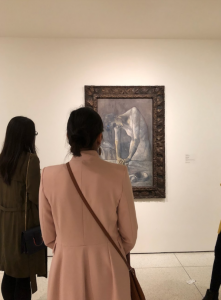
I spent my third morning traipsing around the lively Manhattan. After lunch with Vino at a narrow little patisserie, Via Quadrono, I headed to the Guggenheim. From the outside, it was an odd round shape and stark white. It was something like a blank canvas whose frame was cut horribly wrong but in perfect curves before being stretched by a master craftsman. Inside, I was reminded of a peeled orange. The spiraling ramp was enclosed by a white banister circling all the way to the top, the skylight giving way to warm light emitted between each floor.
I moseyed through the modern art section with Caroline, my film student friend, She is very attracted to the pieces where you have to find your own meaning and nothing seems clear. Not me; I like boundaries. My details of notice revolved around the golden water fountains and spotless continuity of white walls. We floated into the impressionist room beginning with Seurat and my excitement mounted.
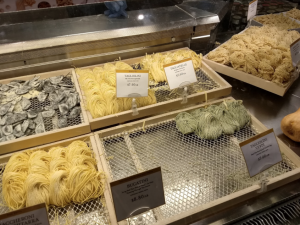
I saw my coveted piece, my six year wish, from across the room under an archway. It was Pablo Picasso’s 1904 Woman Ironing or La Repasseuse. The piece stands less than four feet high, just over a meter, and yet its presence is imposing. I gravitated closer. All the other pieces, the walls in front and around it, the troupe of people faded away. The art took center stage in it’s muted gray-blue finish, characteristic of Picasso’s melancholy and expressive blue period. From several meters away, I could see the trace of orange along her angled shoulder blade, down the curve of her back, and lining the underside of her right arm. Staring at this piece in textbooks and computer images for years, I could not have identified that almost glow in the way that I could in this moment. While her sullen work-worn face is very telling, her eyes are closed and in dark shadow. It is her posture that strikes me most. Yellow tones of the woman’s skin bluntly offset the depressive shadows and concavities of her body, but that warm rigid highlight offers a glimmer of vivacity. At the time, Picasso was relatively unknown and working in poverty, but the minimal scintillating color gives insight into the life he so keenly observed. Picasso’s blue period was characterized by the desolation of social outsiders and his own depression, as much as it also portrayed the twentieth century avant garde.
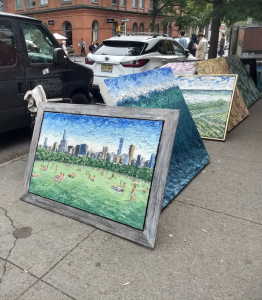
Inspired and in love with the creativity that people in history have shared, that I have the privilege of witnessing, Caroline and I made our way to Central Park. We soaked up the view of the water and skyline at golden hour before heading to dinner in the Flatiron District, named for the landmarked triangular, 22-story steel framed building.
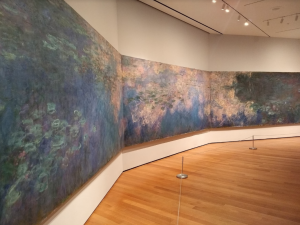
In the following days, I wandered through the posh designer streets of SoHo gawking at street art, dabbled in the musically rich Harlem, and toured the daunting Ivy League Campus of Columbia University back on the Upper West Side.
On my last day, I landed in the Museum of Modern Art, overwhelmed with excitement to see my favorite impressionist and post-impressionist works including Signac, Seurat, Cezanne, and Monet. Though the Signac I based a college art class painting after, Portrait of Félix Fénéon, was not on view, the masters did not disappoint. Monet’s water lilies occupied two entire walls with a continuous canvas and it was breathtaking. His strokes and soft, settled hues breathed fresh cool air back into my body.
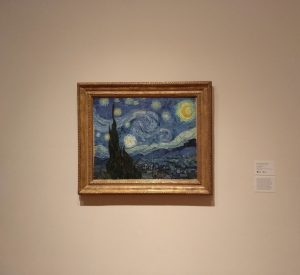
After making a first pass by the crowd at Starry Night, I circled back around for a closer look. As I saw tourists and natives snapping precisely angled photographs and selfies, I pulled out my own phone to snap a photo, when I stopped myself midway. Why did I have this need to document the piece? Surely the world wide web and the MoMA site in particular had better quality photographs than my rushed capture. And what was I thinking about while I captured this piece? Was there adequate time for me to absorb the essence of the creation in front of me? I dropped my phone back into my bag and took a step back away from the crowd off to the side. My unobstructed view of the piece sunk me into the fantasy and idealism of the oil painting. I felt the turns of strokes turn in me, the light of the stars shining upon me, the window view vast before me.
I meandered to the exterior of the museum--dark reflective walls, statue garden, greenery, sleek cement, and minimalist waterfall--I breathed in a cool fall breeze and tried to refocus my attention on capturing the moment with my emotions and mind, as opposed to the image itself. Everything I remember, I remember because of the way it makes me feel.
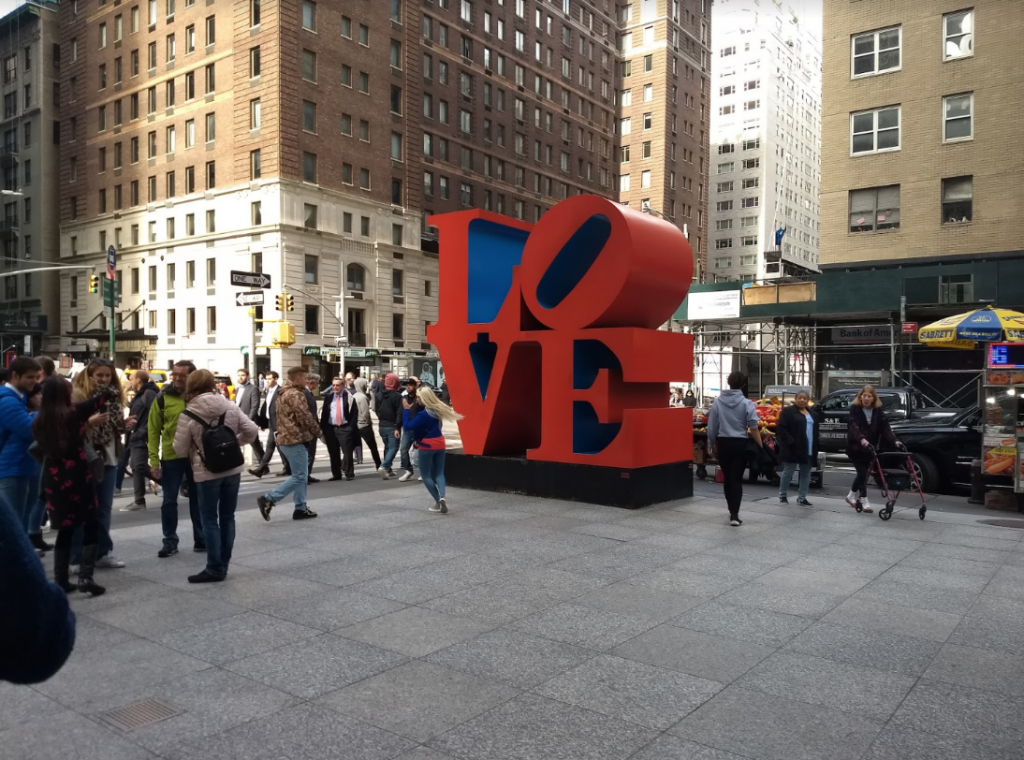
Finding myself lost again getting back to the airport, I ran into the “HOPE” sign and the “LOVE” sign. Eventually, I found my way and successfully boarded my flight to leave the magical Manhattan. After spending the day alone, the lingering thought remained that my serendipitous run-ins reminded me just how loved and hopeful I felt. I had just had my first all nighter at the new job, someone I love was ill, and I was navigating the exhausting twenty something’s social life. But how lucky was I to get to see the art, a few of my favorite people, and a new city all in one week. New York City, in all its hustle and bustle, reminded me to search a little deeper, look at the glass half full, and find love wherever it is.
The End